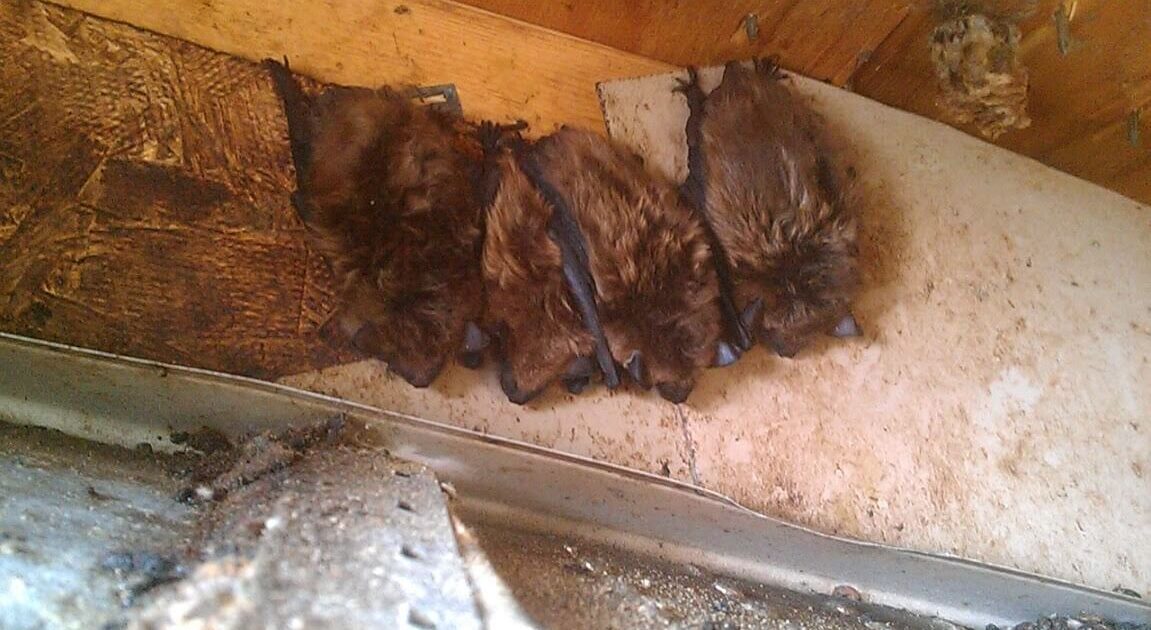There is a great deal of mystery surrounding the only flying mammal on Earth, not to mention a lot of fear. There are 18 bat species in Canada but more than 1,400 around the world! Most of these are nocturnal, which means that they are most active between dusk and dawn. This only adds to their mystery, as few have opportunities to observe these fascinating mammals. However, as fascinating as these creatures are, you don’t want them in your home. If you find yourself with bats in your attic, contact our Coquitlam wildlife control experts as soon as possible.
Environmental Action
Though bats are active after the sun goes down, they provide numerous environmental benefits. In many locations, they are a keystone species, and the ecosystem’s health depends on their continued presence. So, what good do bats do when they head out into the dark at night? A few important bat jobs include:
- Pest control: In our area, all species feast on insects for their nourishment. You can thank a bat for saving you from even more mosquito bites than you already receive every summer. Some species eat as many as 1,000 per hour, and some mama bats feast on 4,000 insects in a single night! Bats are also good for farmers. Brown bats eat roundworms, and a colony of 150 animals may eat as many as 33 million of the pests in a single summer.
- Micro boosters: Five of Canada’s bats dwell in caves, as do numerous other species around the world. In this environment, bat guano is a good thing. Their droppings help some unique microorganisms flourish. Some of them are actually beneficial to people, including bacteria that are used in the production of antibiotics.
- Flower populators: In tropical regions, fruit bats are responsible for pollinating flowers and dispersing seeds. Without bats, you wouldn’t be able to enjoy that banana on your cereal or ice cream. They also help in the reproduction of other important crop foods, such as cashews, figs, dates and mangos.
Hide and Seek
During the daytime, bats hide out in places that provide them with protection from predators while they sleep or simply hang around grooming and socializing. At night they take flight, seeking sustenance and sometimes new places to roost. You are most likely to spot bats in action as they leave their roost just after dark, or when they return just before sunrise.
In some places, like Austin, Texas, observing bats take flight is a huge attraction for tourists and locals alike. Here, a colony of 1.5 million bats resides under the Congress Street Bridge, and every night the crowds gather to watch them spill out from under the bridge and head into the skies to chase down insects.
Positive Attraction
While bats are great for the environment, you don’t want them residing in your home. When a colony sets up residence in your attic, their droppings soak into the insulation, floors and walls, causing a great deal of damage. They may also transmit diseases such as histoplasmosis. Though bats carry rabies, the risk of getting it is rather low unless you attempt to handle one. Removal is best left to those who have the skill and expertise required for humane Coquitlam wildlife control.
Bats are good for your backyard habitat, so if you want to attract bats to your property, there are positive ways to do so. First, you need to make sure none are living in your home. If your attic is clear, all entry points need to be sealed to prevent any bats from entering. Once you’ve closed off your attic to unwanted occupants, you can set up bat houses in your yard to provide them with a safe place to roost.
A Rapid Response
When you have bats roosting in your home, you can count on Skedaddle for humane bat removal. Our technicians are trained in removal methods that keep the bats safe from harm so that they can continue doing their important work in nature. Contact us today to schedule services.




